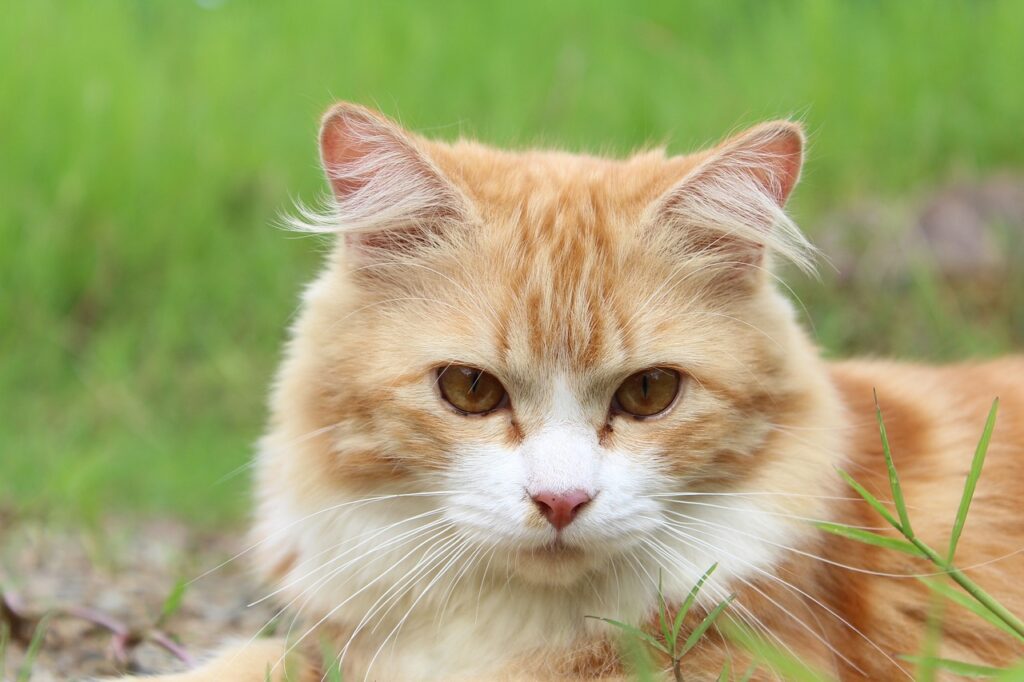Welcome, feline aficionados! Have you ever contemplated the idea of bringing a
new kitten into your dwelling, only to be filled with apprehension about the
potential chaos? Worry not! We’re here to guide you through.
Understanding Feline Dynamics
Alpha vs. Newbie
To us, kittens radiate cuteness. However, to your senior cat, these tiny
furballs are often seen as intruders. The reason behind this perception is
rooted in a cat’s territorial instincts. When a new kitten arrives, the
established cat might feel threatened. It’s vital to grasp this instinctual
behavior to handle introductions smoothly.
Cat Personalities
Cats are unique, much like humans. While some thrive in the company of others,
some cats prefer solitude. Observing your cat’s behavior with other felines
can give a hint. If your cat is more independent, introducing a new kitten
might require more tact and patience.
Age Gap Concerns
Age plays a crucial role. Older cats might find it hard to accept new kittens.
Their energy levels differ. Younger cats might be more receptive, as they’re
often more playful and adaptable. Recognizing this dynamic is crucial for a
smoother transition.
Sibling Rivalries
Introducing two kittens might sound like a good idea. They can keep each other
company. But, be cautious. Just like humans, feline siblings can have their
disagreements. Understanding their dynamics is essential to avoid unnecessary
conflicts.
Preparation is Key
Setting Boundaries
Each cat should have its territory. This approach minimizes conflicts during
the initial phase. Having separate areas ensures that each feline can retreat
and feel safe. Over time, these boundaries can be relaxed.
Introduction through Scent
Cats communicate largely through scent. Introduce toys or bedding items first.
This method allows them to get familiar with each other’s scent. It helps in
making the actual face-to-face meeting less intimidating.
The Perfect Meeting Spot
Pick a neutral area for the first meeting. Avoid places your older cat
considers its territory. A neutral spot ensures neither cat feels threatened.
This technique reduces the chance of an aggressive response.
Patience is Virtuous
Every good thing requires time. Avoid hurrying the introduction process.
Observing their reactions and adjusting accordingly is the key. Patience
ensures a higher likelihood of successful cohabitation.
First Impressions Matter
The Right Time
Pick a calm moment for introductions. A time post-feeding works best. Both
cats are likely relaxed, making the meeting smoother.
Supervised Playtime
Always monitor their interactions. Cats might be playing one moment and
fighting the next. Being present can prevent potential conflicts.
Signs of Aggression
Stay alert for aggressive signs. Hissing, growling, or arched backs are
signals. If noticed, it’s best to separate them and reintroduce later.
Positive Reinforcement
Encourage friendly behaviors. When they interact positively, offer treats or
praise. This technique reinforces good behavior and aids in bonding.
Handling Post-Introduction Hiccups
Establishing Territories
Despite initial boundaries, disputes might occur. Re-evaluate their spaces if
so. Separate feeding and resting areas can help reduce tension.
Distraction Techniques
Distractions can diffuse tense situations. Toys, especially interactive ones
like laser pointers, can divert their attention from each other to play.
Consulting a Vet
Persistent aggression is a concern. If peace is elusive, it’s wise to consult
a vet. Sometimes, health issues or stress might be the root cause.
Patience, Again!
Building trust and friendship between cats isn’t an overnight task. Stay
patient. Adjust strategies as needed, and remember, each feline is unique.
Long-Term Peacekeeping
Regular Playtime
Engage both cats in shared activities. This practice strengthens their bond.
Using toys that require team effort can promote unity.
Monitor Health
Regularly check their health. An unwell cat can become grumpy. Quick action
can prevent health-induced conflicts.
Shared Resources
Have ample resources to prevent fights. Multiple litter trays and food bowls
can prevent territorial behavior over essentials.
Love & Affection
Equal attention is crucial. Avoid favoritism. Cats can sense neglect, leading
to jealousy and conflicts.
When To Seek Help
Continuous Aggression
If harmony seems distant, professional intervention might be the solution. A
pet behaviorist can offer insights and solutions.
Physical Harm
Any aggression resulting in injuries is serious. Immediate action is
essential. Consult your vet for guidance.
Behavioral Changes
Any sudden behavioral shifts warrant attention. Depression or increased
aggression might indicate underlying issues. Don’t hesitate to seek expert
advice.
Multiple Introductions
Introducing several pets at once changes dynamics. If you’re in such a
situation, consider seeking expert guidance to ensure smooth transitions.
Conclusion
Introducing a new kitten can be a roller coaster of emotions. It’s filled with
hope, excitement, and sometimes tension. Yet, with patience, understanding,
and informed strategies, a peaceful coexistence is attainable. Embrace the
journey, and soon your home will resonate with the sound of contented feline
purrs.
FAQs
- Why is my older cat hissing at the new kitten?
-
This behavior is natural. It’s often about asserting dominance or expressing
fear. Patience and slow reintroductions can ease this. - How long should I wait before a face-to-face introduction?
-
A waiting period allows acclimation. Several days of scent swapping is
recommended before a visual introduction. - My cats are fighting, what should I do?
-
Immediate separation is crucial. Ensure a cool-down period. Then, attempt a
calm reintroduction. - Can older cats harm kittens during play?
-
Generally, older cats show restraint. But, supervision is key. Ensure their
play doesn’t escalate to aggression. - Should I get two kittens instead of one?
-
Two kittens might entertain each other. But, assess your older cat’s
temperament. Some cats might find two newcomers overwhelming.



